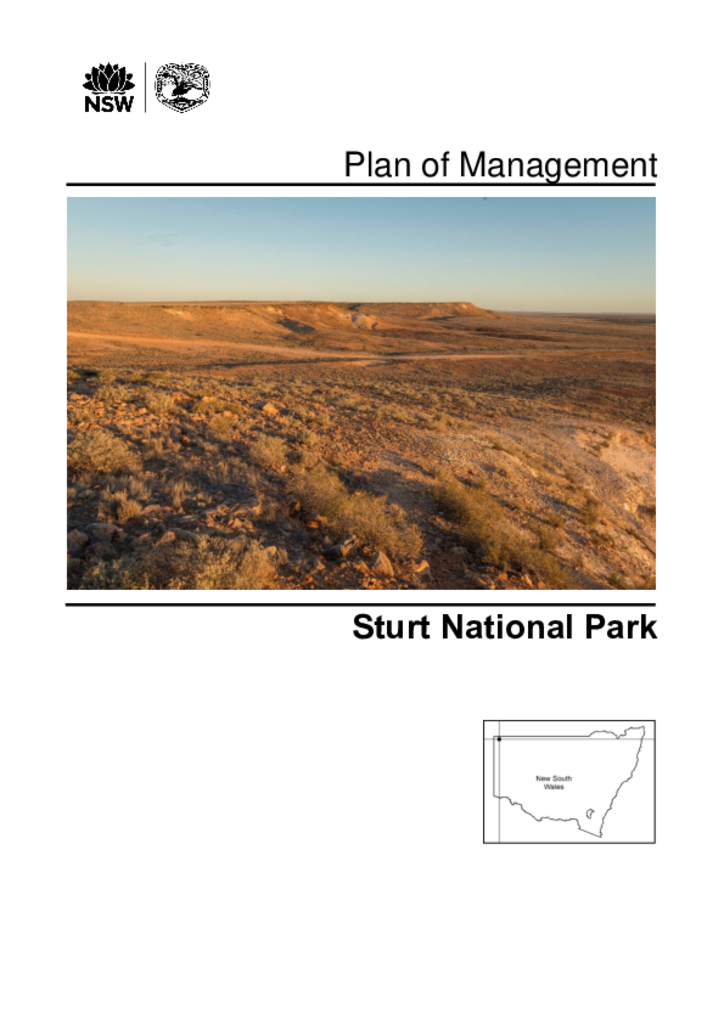Sturt National Park Plan of Management
Sturt National Park is in the remote, arid ‘Corner Country’ of New South Wales where the boundaries of Queensland and South Australia meet. The little town of Tibooburra lies just outside the park.
With an area of 325,329 hectares, Sturt National Park is the largest park in western New South Wales. Together with parks in the adjoining states and the Northern Territory it protects the desert landscapes and ecosystems of the Simpson–Strzelecki Dunefields Bioregion and the Channel Country Bioregion.
Lake Pinaroo, in the north-west corner of the park, is a wetland of international significance and provides important habitat for migratory birds in the arid interior. The park also supports 51 threatened animal species and 16 threatened plant species.
The park area is rich in Aboriginal sites, some of which probably date back at least 20,000 years. It also has a wealth of historic places associated with early exploration, such as the epic exploration journey undertaken by Charles Sturt in the 1840s and early pastoral use. The archaeological heritage of the park will be conserved and significant historic places will be protected.
A public consultation on the reintroduction of locally extinct mammals was held in 2017. The Reintroduction of Locally Extinct Mammals Project under the Saving our Species Program began in 2017 in the park. In addition to reintroducing small mammals, which were once present in the western New South Wales landscape and act as ecosystem engineers, the project is expected to benefit all biodiversity in the park through intensified pest control.
